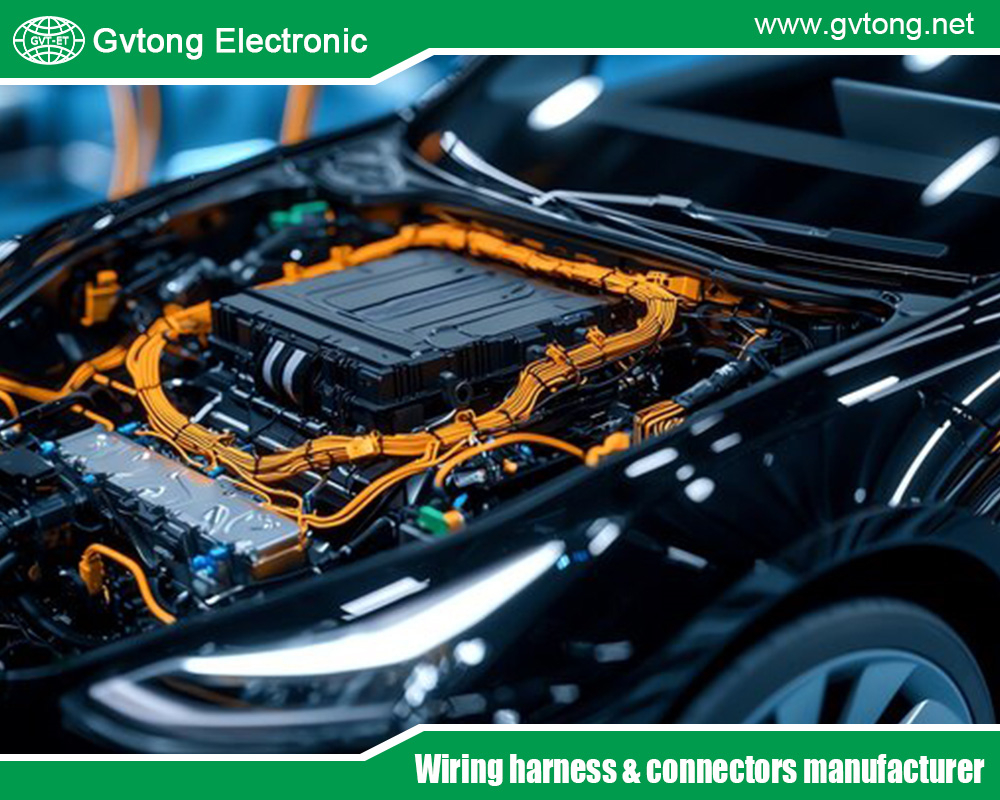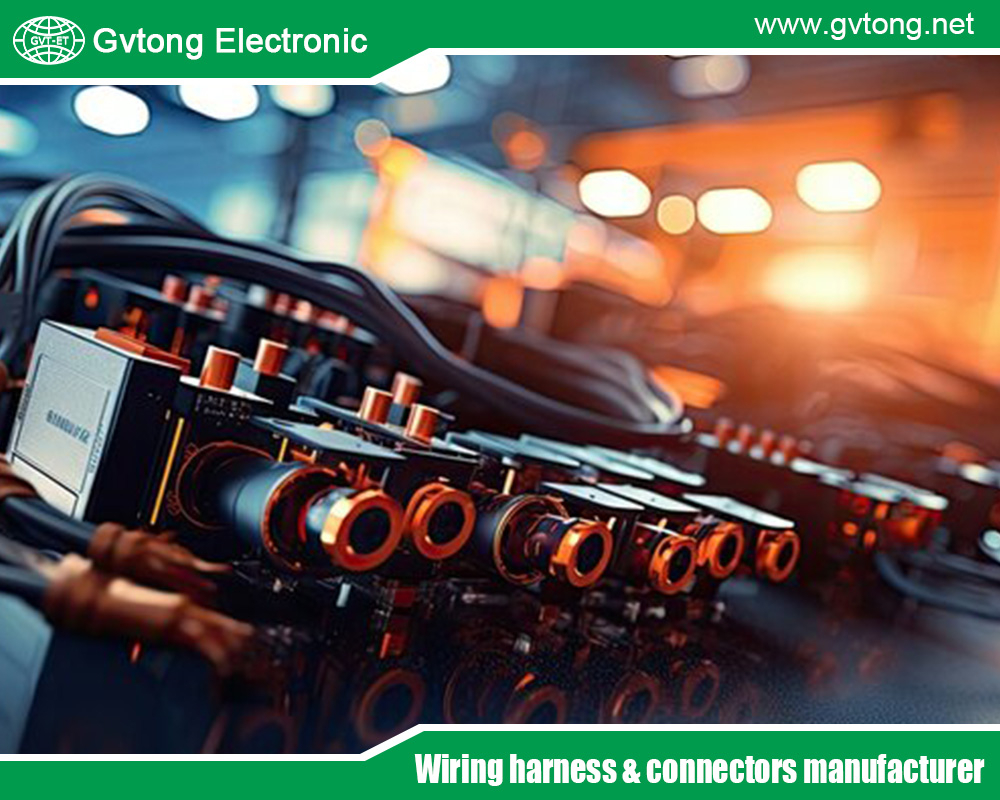Blogs & News
We are focus on automotive wiring harness & connectors technology.
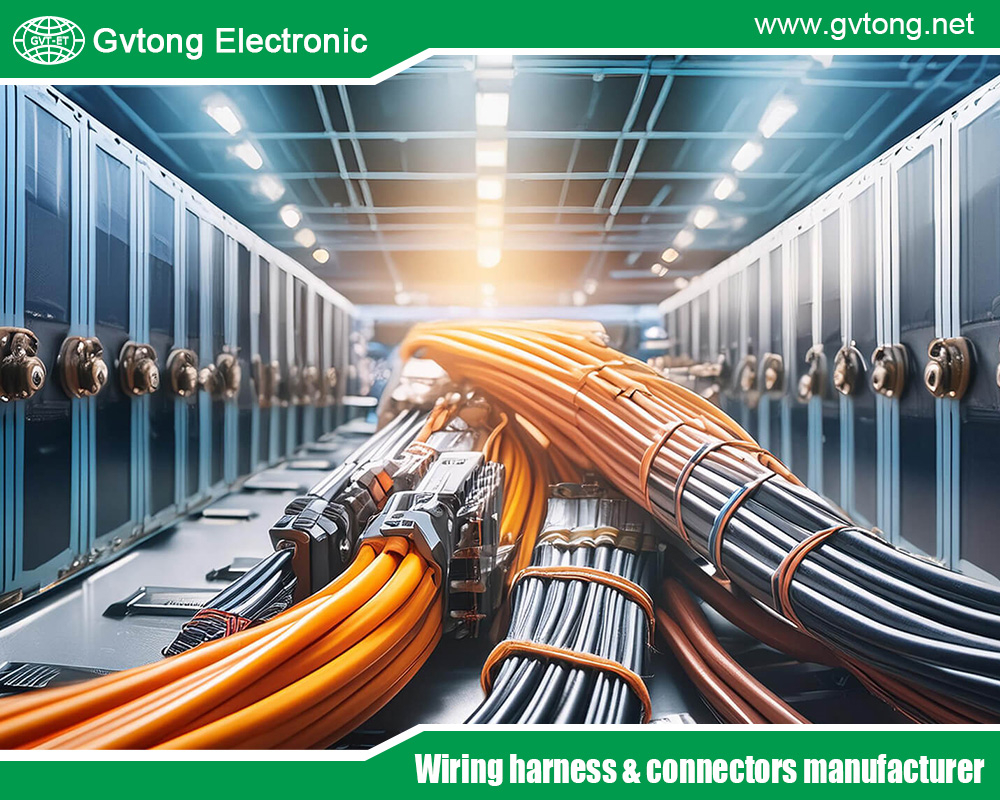
In – depth Analysis of the Power Distribution Principle of Five – Pin Connectors
- Gvtong Electronic
- 12 volt 2 pin waterproof connector, 2 pin waterproof electrical connector, 2 Pin Way Car Waterproof Electrical Connector, 2p 32p Automotive Connector Terminal Crimping, 4 Pin Connector, 4-wire electrical connectors, 4-wire pigtail connectors, 4-wire pigtail connectors campany, 4-wire pigtail connectors factory, 4-wire pigtail connectors manufacturer, 4-wire pigtail connectors system, 48V board net connectors, 5-pin plug connector, 7 - way connector factory, 7-pin wire connector manufacturer, automotive antenna connector, automotive coaxial connector, automotive data connector, automotive diagnostic connector, Automotive high - frequency connector, automotive hybrid connector, automotive optical fiber connector, Automotive power distribution connector, Automotive temperature - resistant connector, Automotive vibration - resistant connector, five - pin connectors, five - pin connectors manufacturer
- No Comments
In – depth Analysis of the Power Distribution Principle of Five – Pin Connectors
In modern electronic devices and electrical systems, five – pin connectors are widely used in the field of power distribution due to their unique structural and performance advantages. Understanding the principle of power distribution by five – pin connectors is of great significance for ensuring the stable operation of electrical systems, improving energy utilization efficiency, and ensuring the safety of equipment and personnel.
Basic Structure and Composition of Five – Pin Connectors
Contact Elements
Contact elements are the core components of five – pin connectors for power distribution, usually made of highly conductive metal materials such as copper alloys. These pins are carefully designed and arranged to ensure a reliable connection with the mating connector. Generally, the pins of a five – pin connector have clear functional divisions, and common ones include the power positive (V+), power negative (V-), and pins for signal transmission or special functions. For example, in five – pin connectors used in some industrial equipment, two of the pins are specially used for power transmission, and the other three are responsible for transmitting control signals or sensor data to achieve intelligent control of the equipment.
Insulators
Insulators play a vital role in five – pin connectors by separating each pin to prevent current leakage and short circuits. Common insulating materials include high – temperature resistant and flame – retardant special engineering plastics. These materials not only have good insulating properties but also can withstand mechanical stress and environmental factors to a certain extent, ensuring the safe operation of the connector under various complex conditions. For example, the insulators of five – pin connectors used in high – temperature environments such as the engine compartment of a car need to have excellent high – temperature resistance to ensure the stability of power distribution.
Shells
The shell is the external protective structure of the five – pin connector, which provides physical protection for the internal contact elements and insulators, preventing damage from external impacts, dust, moisture, etc. At the same time, the shell can also shield electromagnetic interference to ensure the normal operation of the connector in complex electromagnetic environments. Shells are usually made of metal or high – strength plastic. Metal shells have better shielding performance and mechanical strength, while plastic shells are lighter and lower in cost, suitable for some application scenarios where weight and cost are more sensitive.
Power Distribution Principle of Five – Pin Connectors
Basic Principle of Current Transmission
The power distribution process of five – pin connectors is based on Ohm’s law and Kirchhoff’s laws. When the power supply is connected to the power positive (V+) pin of the five – pin connector, the current flows from the high potential to the low potential under the action of the electric field, that is, after passing through the load device, it returns to the power supply from the power negative (V-) pin to form a complete current loop. In this process, the contact elements of the connector serve as the transmission channel of the current, and the size of their resistance directly affects the efficiency and stability of current transmission. High – quality five – pin connectors usually use contact element materials with low resistance and ensure close contact between the contact elements through optimized design to reduce contact resistance and minimize power loss.
Pin Functions and Power Distribution
- Power Positive and Negative Pins: In a five – pin connector, the two pins specially used for power transmission respectively play the roles of the power positive and negative. The power positive pin introduces the positive potential of the power supply into the connector to provide electrical energy for the connected equipment; the power negative pin is responsible for returning the current generated after the equipment consumes electrical energy to the power supply to complete the current cycle. The size and structural design of these two pins usually take into account the need to carry a large current to ensure stable power transmission during the normal operation of the equipment.
- Synergy between Signal Pins and Power Distribution: In addition to the power positive and negative pins, the other pins in the five – pin connector may be used for signal transmission. These signal pins are closely related to power distribution in some cases. For example, in smart devices, signal pins can transmit control signals to adjust the power distribution strategy according to the working state of the device. When the device is in low – power mode, the control signal can be transmitted to the power management module through the signal pin, so that the power distribution system reduces the output power to achieve energy saving; when the device needs to run at high performance, the control signal can prompt the power distribution system to provide greater power support.
- Influence of Special Function Pins on Power Distribution: Some five – pin connectors may be provided with special function pins, which play a unique role in specific application scenarios and thus affect power distribution. For example, some five – pin connectors are equipped with detection pins, which can real – time monitor parameters such as the voltage and current of the power supply and feedback this information to the control system. The control system dynamically adjusts the power distribution according to the detected data to ensure the stable output of the power supply and the normal operation of the equipment. If the detected power supply voltage is too low, the control system can adjust the power distribution to give priority to supplying power to key equipment and ensure the basic functions of the equipment are not affected.
Factors Affecting Power Distribution of Five – Pin Connectors
Contact Resistance
Contact resistance is one of the key factors affecting the efficiency and stability of power distribution of five – pin connectors. Contact resistance is mainly caused by oxidation, pollution of the contact element surface, and insufficient contact pressure. When the contact resistance is too large, a large power loss will occur when the current passes through the connector, causing the connector to heat up, and in severe cases, it may affect the normal operation of the equipment. In order to reduce the contact resistance, the contact element surface of the five – pin connector is usually specially treated during the manufacturing process, such as gold plating and silver plating, to improve the surface conductivity and oxidation resistance. At the same time, by optimizing the structural design of the connector to ensure sufficient contact pressure between the contact elements, the contact resistance can also be effectively reduced.
Environmental Factors
Environmental factors also have a significant impact on the power distribution performance of five – pin connectors. Environmental conditions such as temperature, humidity, dust, and corrosive gases may all lead to a decline in the performance of the connector. In a high – temperature environment, the insulating material of the connector may age and deform, resulting in a decrease in insulation performance, which may cause problems such as electric leakage and short circuits; in a humid environment, moisture may invade the inside of the connector, causing corrosion of the contact elements and increasing the contact resistance; dust and corrosive gases may deposit on the surface of the connector, affecting the conductivity and reliability of the contact elements. Therefore, when selecting and using five – pin connectors, it is necessary to select products with corresponding protection levels according to the specific application environment and take necessary protective measures, such as sealing and dust covers.
Load Characteristics
Load characteristics refer to the power consumption characteristics of the equipment connected to the five – pin connector, including the power demand of the load, the type of current (DC or AC), and the starting current. Different load characteristics have different requirements for power distribution. For loads with large power, the five – pin connector needs to be able to carry a large current; otherwise, problems such as overheating and burning may occur. For loads with large starting currents, such as motors, a large inrush current will be generated at the moment of starting, which requires the connector to be able to withstand this instantaneous large current冲击 without affecting its normal power distribution function. Therefore, in the design and use of five – pin connectors, it is necessary to fully consider the load characteristics, select appropriate specifications of connectors, and take corresponding protection measures, such as over – current protection and buffer circuits.
Application Examples of Power Distribution of Five – Pin Connectors in Different Fields
Industrial Automation Field
In industrial automation production lines, five – pin connectors are widely used in the power distribution and signal transmission of various equipment. For example, the connection between a programmable logic controller (PLC) and equipment such as motors, sensors, and actuators usually uses five – pin connectors. Through the five – pin connector, the PLC can provide stable power for these devices and achieve precise control of the devices. In an automated assembly line, the motor needs the five – pin connector to provide power to drive the operation, and at the same time, the sensor transmits the detected workpiece position, status and other signals to the PLC through the five – pin connector, and the PLC controls the actuator to complete the corresponding assembly action according to these signals.
Automotive Electronics Field
Five – pin connectors also play an important role in automotive electronic systems. The engine management system, lighting system, audio system, etc. of a car are all inseparable from the power distribution and signal transmission of five – pin connectors. Take car headlights as an example, the five – pin connector一方面 provides power for the headlights to ensure that the headlights can emit light normally;另一方面, it can also transmit dimming signals, fault detection signals, etc. to achieve intelligent control of the headlights. In addition, in new energy vehicles, five – pin connectors are also used to connect the battery management system with key components such as the battery pack and motor controller to ensure the efficient transmission of electrical energy and the stable operation of the system.
Communication Equipment Field
In communication equipment, five – pin connectors are often used to connect the power module with the motherboard, radio frequency module and other components. With the continuous development of communication technology, the requirements for the power stability and signal transmission quality of communication equipment are getting higher and higher. Through reasonable pin layout and the selection of high – performance materials, the five – pin connector can meet the power distribution needs of communication equipment in complex electromagnetic environments and ensure the reliable operation of the equipment. For example, in a base station device, the five – pin connector delivers stable power to each communication module and at the same time ensures the accurate transmission of control signals and data signals, providing a strong support for the realization of efficient wireless communication.
Five – pin connectors achieve safe and efficient power distribution through their unique structural design and working principles. In practical applications, fully understanding the factors affecting their power distribution performance and selecting appropriate five – pin connectors according to the needs of different fields is crucial for ensuring the stable operation of electrical systems and the normal work of equipment. With the continuous progress of science and technology, the performance and functions of five – pin connectors will also be continuously optimized and improved, providing more reliable support for the development of more fields.
For more about in – depth analysis of the power distribution principle of five – pin connectors, you can pay a visit to Gvtong at https://www.gvtong.net/ for more info.
Recent Posts
The Best GR Series-Circular Connectors Manufacturer
The Best GD Series Combined Power Connector Manufacturer
A Guide to Selecting the Best GH Series Plastic Connector Manufacturer
How High Pressure Connectors Work?
The Best Automotive Connector Companies
Tags
Recommended Products
-
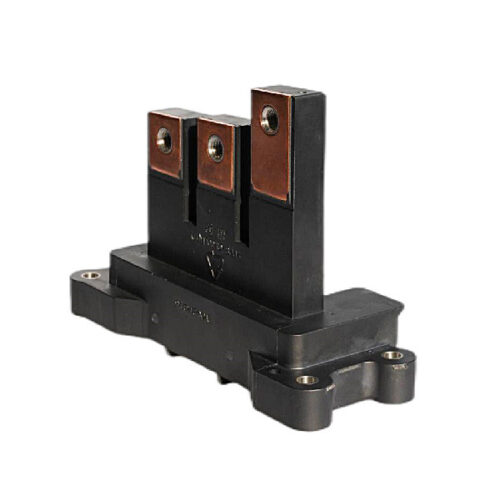
Electronic control copper bar assembly
-
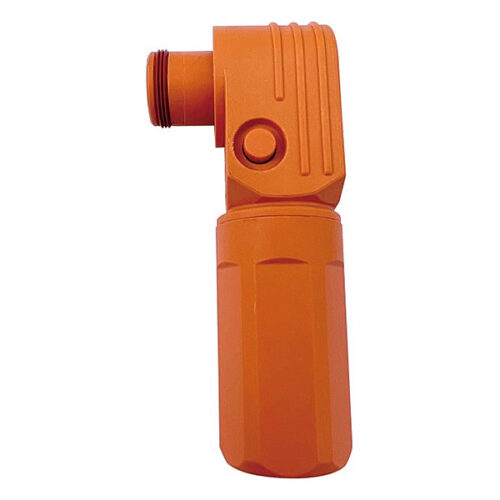
Energy storage connector 8.0mm
-
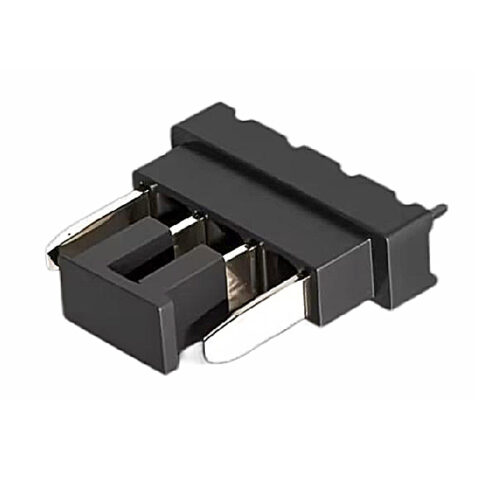
GE Series-WTB 4pin Connector Plug
-
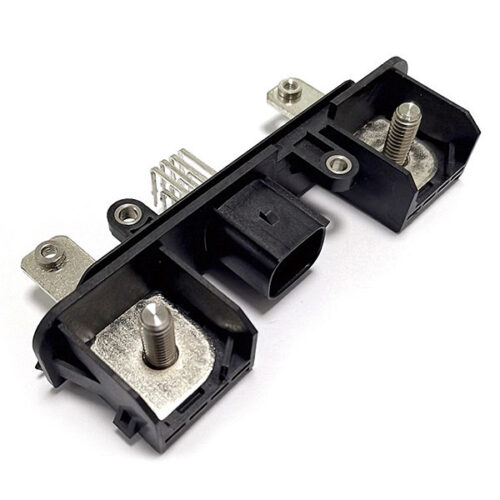
Combined power connector-(2+8) core
-
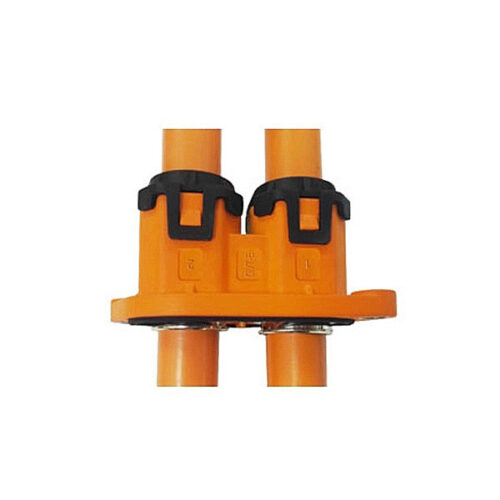
Automotive 2-Core Plastic Via Connector Automotive Connector 2 Pin 2.8mm 23A Straight Socket Plastic Shell
-
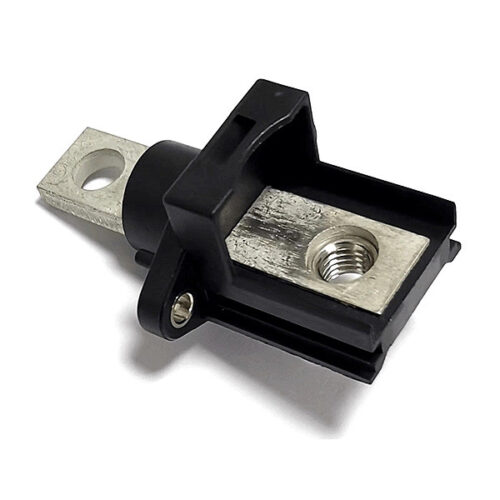
GHDC terminal
-
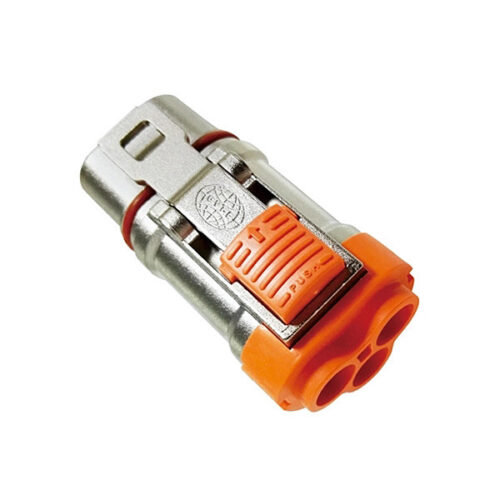
Metal connector-3.6mm-3 core
-
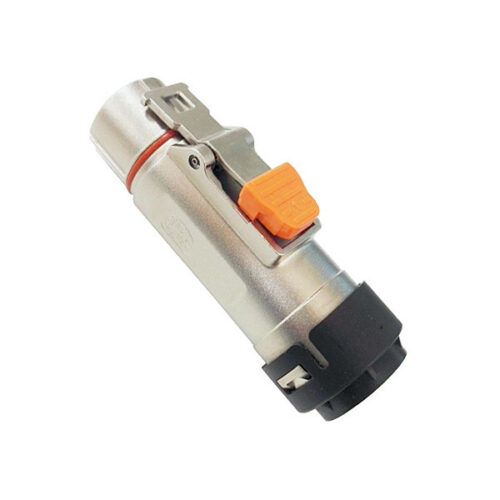
Straight metal connector-10mm-single core

